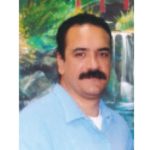Gov. Jerry Brown’s latest effort to end federal supervision of mental health services available to state prisoners received a harsh rebuke by judges … [Read more...]
Archives for May 2013
A Negative Lifestyle Changes for the Better
At the age of 15, Fabian Vasquez came to the United States from Mexico for what he hoped would be a better life. But by age 20, he was convicted and … [Read more...]
Delaware’s ‘Justice Reinvestment’ Improves Criminal Justice System
Delaware is making significant improvements to how its criminal justice system operates after the state Legislature approved major changes called … [Read more...]
Three-Judge Panel Pushes Brown on Population
Gov. Jerry Brown’s effort to shun a federally imposed population cap on California’s prisons was met with clear-cut directives by a three-judge … [Read more...]
The Effects of California’s 3 Strikes Law
Benny Elmore cannot forget the $1.16 box of donuts that got him sentenced to prison for the rest of his life. K Mart security officials say cameras … [Read more...]
What Some S.Q. Prisoners Think of Cinco de Mayo
The World Almanac reports there are cultural celebrations and awareness months throughout the year. February is Black History Month, March is … [Read more...]
Mother’s Day Remembrance
The men on the mainline know and remember their mothers well. “Asked on the Line” conducted random informal interviews with 19 mainliners about the … [Read more...]
An ‘OG’s’ Perspective
The Struggle We Have With Personal Choices It’s hard to live in a whore house and not become a trick. Even for the most “virtuous” among us, it would … [Read more...]
Pelican Bay Segregated Housing Units Reported as ‘Torturous’
Conditions at Pelican Bay’s Segregated Housing Units are tortuous, according to men interviewed for KQED by reporter Michael Montgomery. More than … [Read more...]
New Class Teaching Diabetics
A new diabetes class began at San Quentin’s H-unit in February. “So far the results are promising,” said Nurse Appleton. After relocating to San … [Read more...]





